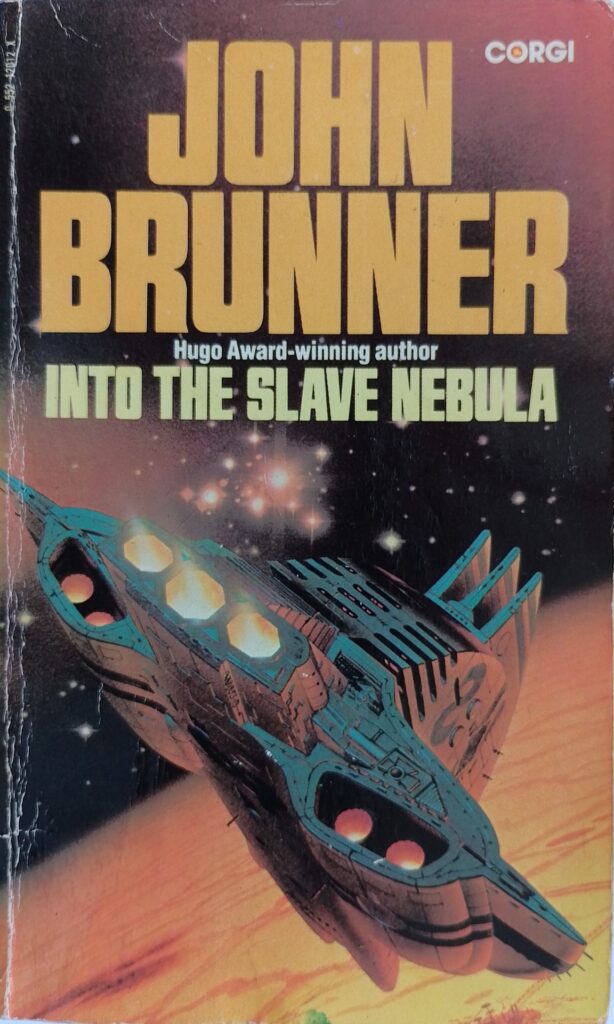First published 1968. Corgi paperback, 1982, pp 157, c.50,000 words.
The set up here is a familiar one: A man who is part of an immensely wealthy family is bored with his life and suddenly finds an opportunity for adventure, and eventually redemption. It’s a good setup, open to many retellings.
Earth’s inhabitants are mostly highly privileged and have no need to work. Mechatronic robots and blue-skinned organic androids do all the service and production work – adding an element of commentary on racism. Robots are manufactured on Earth, but androids come from the outer planets because it is cheaper to grow them out there.
Once a year all Earth gives itself over to carnival: an opportunity to indulge in every fancy, with few rules or moral restraints; Rio’s or Venice’s carnivals taken to extremes. Other Brunner’s stories also feature South American cultural elements: see his The Squares of the City for example, where the titular city bears resemblance to Brasilia in being highly planned and modernistic.
This story is set in a future where humans have spread out and colonised many other planets, but Earth remains the centre of power and wealth. The book opens with Derry Horn, the wealthy playboy, staying away from his family in a luxury hotel as carnival is just getting stated. As he shakes off his ennui, he heads down to the street to indulge in all carnival has to offer. Before he can get there, he encounters a brutally murdered android, and then a similarly treated human. The android hotel manager arrives and is greatly moved by the deaths. A cop arrives, but makes only a superficial investigation. The manager encourages Horn to follow up, and he discovers that the murdered human was an exceptional character from off-world. After some hesitation he decides to investigate, following a trail to the far distant inhabited planets.
This journey is well imagined, with the planets becoming increasingly distant both culturally as well as physically from Earth. One has a vaguely Norse-Legend type culture and others are controlled by authoritarian and barbaric regimes, and it is these cultural contrasts that drive the story and provide its interest, rather than any space technology which is mostly glossed over. Occasionally the dialog is a little clunky, but the psychology is mostly spot-on. Horn becomes increasingly scared of what he has taken on the further he gets from home.
There are cultural aspects of this future that are straight out of the 1960s. Women serve the men and everyone smokes. Some of the technology has advanced but we are only given names and not technical details: bubble taxis, paddleboats, Calliopes (a musical instrument?), etc. While “Creew ‘n Dith” is an interesting name for a planet, it is a bit of a mouthful. Surely locals would have shortened it in normal speech.
Brunner writes easily accessible prose and the story is well constructed. It may not be first class literature but it is an entertaining read with an underlying bite concerning vile racism and slavery.
Wikipedia biography of Brunner: https://en.wikipedia.org/wiki/John_Brunner_(author)
Wikipedia summary of the book: https://en.wikipedia.org/wiki/Into_the_Slave_Nebula
Others’ reviews of the book: https://www.goodreads.com/book/show/2398743.Into_the_Slave_Nebula?from_search=true&from_srp=true&qid=jwz0oZZLOz&rank=1
© William John Graham, August 2023

